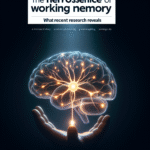In a world characterized by rapid change, uncertainty, and occasional struggles, the ability to bounce back, adapt, and thrive is more crucial than ever. The journey towards resilience, both individually and community-wise, requires strong foundations. This article explores how you can develop resilience in yourself and within your community, providing practical insights, relevant case studies, and inspiring conclusions.
Introduction: The Importance of Building Resilience
Imagine a community that faces natural disasters, economic downturns, and social issues but emerges stronger with each challenge. This phenomenon isn’t just a dream; it’s the result of robust resilience. Resilience is not merely a personal trait; it is a community asset that requires strong foundations. Strong foundations: developing resilience in yourself and your community is essential not only for survival but for flourishing in an unpredictable world. The path to resilience involves understanding its dimensions, implementing practical strategies, and creating supportive networks that empower individuals and communities alike.
What is Resilience?
Resilience can be defined broadly as the ability to adapt and recover in the face of adversity. Psychologically, it refers to an individual’s capacity to engage positively with challenges rather than be overwhelmed by them. Community resilience takes this a step further, involving collective efforts that enhance the capacity of communities to withstand, adapt to, and recover from stresses.
Dimensions of Resilience
- Emotional Resilience: This aspect focuses on personal emotions and responses to challenges.
- Social Resilience: This involves the strength of social ties and community networks.
- Economic Resilience: This refers to a community’s economic systems and support structures.
- Environmental Resilience: This focuses on how well a community can handle and adapt to environmental changes.
Figure 1: Dimensions of Resilience
Building Strong Foundations: Developing Resilience in Yourself
Self-Awareness
Understanding Your Emotions
The first step in developing resilience is self-awareness. By recognizing your emotions, thoughts, and behaviors, you can better manage how you respond to stress.
Case Study: Mindfulness Practices
Incorporating mindfulness practices into daily routines has shown substantial benefits for individual resilience. For instance, a study at Stanford University found that participants who practiced mindfulness experienced lower anxiety levels and improved emotional regulation, directly enhancing their resilience.
Positive Thinking
The Power of Optimism
Fostering a positive mindset allows you to reframe challenges as opportunities. This shift in perspective is vital for building resilience.
Table 1: Strategies for Cultivating Positive Thinking
| Strategy | Description |
|---|---|
| Affirmations | Positive statements that reinforce self-belief |
| Gratitude Journaling | Daily reflections on what you are thankful for |
| Visualization | Imagining positive outcomes in challenging situations |
Emotional Regulation
Managing Stress
Effective emotional regulation techniques, such as deep breathing, journaling, and physical activity, can help diminish stress and build personal resilience.
Developing Resilience in Your Community
Strong Social Networks
Building Community Connections
Developing resilience at the community level hinges on strong social connections. These networks provide support and resources during challenging times.
Case Study: Community Support Groups
In New Orleans after Hurricane Katrina, community support groups played a crucial role in recovery efforts. Neighbors came together to share resources, rebuild homes, and provide emotional support. The result was a far more resilient community, capable of facing future challenges.
Economic Empowerment
Investing in Local Economies
Economic resilience is grounded in strong local economies. Communities can foster resilience through supporting local businesses, ensuring mutual aid, and providing job training programs.
Table 2: Economic Enrichment Strategies
| Strategy | Benefits |
|---|---|
| Skill Development | Prepares individuals for diverse job markets |
| Local Business Incubation | Encourages entrepreneurial growth |
| Community Investment Funds | Finances community-led projects |
Community Engagement and Participation
Encouraging Involvement
Getting community members involved in local governance and events enhances ownership and responsibility, contributing to improved resilience.
Case Study: Participatory Budgeting
Participatory budgeting in several cities allows citizens to vote on local projects and budget allocations. This not only fosters greater community investment but also builds trust in local governments, creating strong foundations for resilience.
Actionable Insights and Strategies
- Foster Emotional Intelligence: Encourage self-awareness and emotional regulation practices in both personal and communal settings.
- Strengthen Social Networks: Create platforms for community members to connect and collaborate on projects.
- Support Local Economies: Advocate for local business support initiatives and economic diversification efforts.
- Encourage Open Communication: Set up open forums where community members can voice concerns and discuss resilience strategies.
- Implement Training Programs: Develop training schemes that equip individuals with skills to face economic and social changes.
Conclusion: The Path Forward
Strong foundations: developing resilience in yourself and your community is not an easy task, but it is one of the most rewarding journeys you will undertake. By investing in your emotional well-being and fostering a supportive community environment, you position yourself and those around you for success amidst adversity. As we move forward, let us embrace both the challenges and the opportunities they bring. Together, we can architect communities that not only survive but thrive in an ever-evolving world.
FAQs
1. What are some signs that someone may need help developing resilience?
Common signs include chronic stress, feelings of overwhelm, and difficulty in managing emotions. Seeking professional support, like therapy or counseling, can greatly assist in building resilience.
2. How can I encourage resilience in my children?
Teach them emotional regulation techniques, promote problem-solving skills, and encourage positive social interactions. Modeling resilience in your own behavior is also beneficial.
3. Are there specific community programs you recommend for resilience building?
Yes, programs like community gardening, skill-sharing workshops, or local emergency preparedness drills can foster resilience in the community.
4. How can social media play a role in building community resilience?
Social media can facilitate communication, organize community events, and promote local businesses, strengthening social networks.
5. Why is resilience important for future generations?
Resilience equips future generations with the skills to navigate challenges, fostering adaptability and self-sufficiency in a complex world.
Call to Action
Start building your strong foundation today. Engage in resilience training, connect with community members, and share your journey toward building a more resilient you and your community. The power to create a sustainable future lies within each of us – let’s begin our journey together!
















